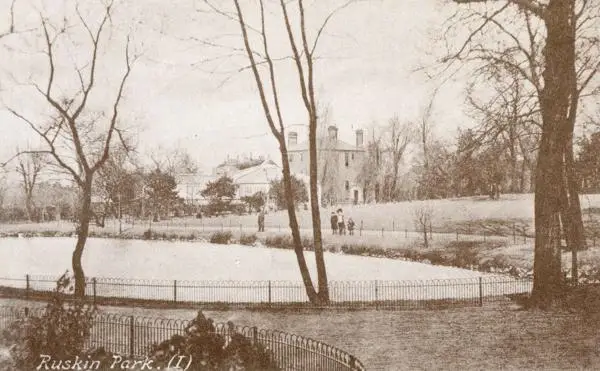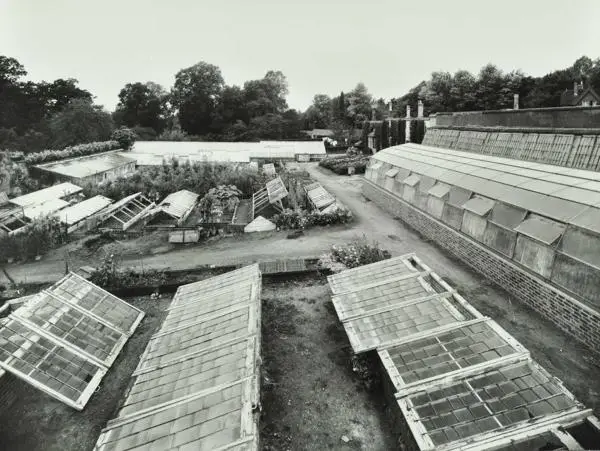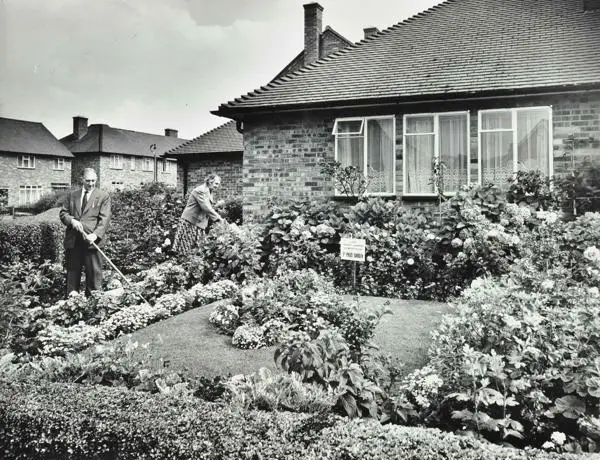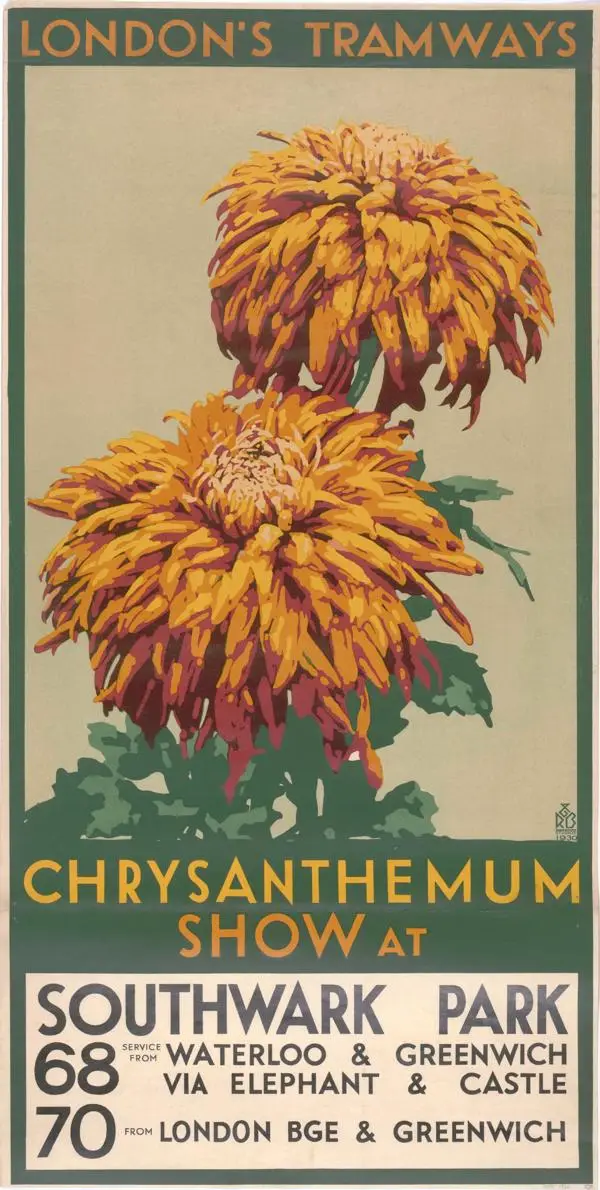Parks and Recreation: using LCC records at LMA
Claire Titley continues her overview of the work of the London County Council (LCC) and looks at open spaces and the records it created.
As part of its remit to run public services in the capital, the London County Council (LCC) managed one of the biggest networks of urban open spaces in the world, including parks, gardens, squares and green spaces on LCC housing developments. Their remit also included the preservation of the Green Belt around outer London.
In 1889 the parks and open spaces managed by the LCC covered 2,800 acres. By 1963 this had grown to 7,200 acres. Over this time, the LCC Parks Department employed hundreds of gardeners and park keepers, built dozens of playgrounds and sports facilities and playgrounds, and hosted year-round programmes of art and entertainment, from open-air sculpture exhibitions in Battersea Park to lakeside concerts at Kenwood House.
This article helps you find out about London’s parks and open spaces, how the LCC ran them and what happened in them.
LMA holds a range of material on individual parks and open spaces and on garden history more broadly – see Research Guide 56: Records of Gardening, Parks and open Spaces.
The management of the Council's parks and open spaces was originally the responsibility of the Superintending Architect. In 1892, a separate 'Parks and Open Spaces Sub-Department' under a chief officer was created and, in 1895, its title was changed to 'Parks and Open Spaces Department'. The Parks Department was responsible for the administration, design, improvement and maintenance of all the Council's parks, open spaces and gardens.
Parks and open spaces
In 1889 the LCC inherited responsibility for the management of several parks and open spaces from the Metropolitan Board of Works (the MBW archives are also at LMA and the key sources for parks are the minutes and papers of the Parks, Commons and Open Spaces Committee, MBW/0977-1035, covering 1869-1888). These parks include Finsbury Park, Highbury Fields, Battersea Park, Kennington Park, Clapham Common, Wandsworth Common and Blackheath.
Following on from the MBW’s development of Dulwich Park, opened by the LCC in 1890, the LCC opened several more parks, often as a result of donations of land ‘for the public good’ or through local campaigns: examples include Waterlow Park in 1891, Brockwell Park in 1892, and Ruskin Park in 1907.

Open spaces acquired by the LCC included Hainault Forest in 1903, Ken Wood in 1924 and Lesnes Abbey Wood and Oxleas Wood in the 1930s.
The LCC saw the parks and open spaces as places where Londoners could improve their health, through fresh air, activity and sunshine and that Londoners had a right to access these spaces. The rapid suburbanisation of London left town planners concerned that some parts of Inner London had little access to open spaces, and this was directly addressed in the County of London plan of 1943, which specified that there should be four acres of open space for each thousand of the population. The intense demand on land in inner London made this a difficult objective, but the LCC continued to open new public parks - like Crystal Palace Park, Hammersmith Park and Haggerston Park - into the 1950s and incorporated green space into post-war housing developments.
London Squares
Attempts to build on London’s squares were vigorously opposed by the LCC who supported the London Squares and Enclosures Preservation Act of 1906. Even this could not stop building on prominent enclosures of Endsleigh Gardens and Mornington Crescent, and the LCC introduced the London Squares Preservation Bill in 1931; as a result over 460 garden enclosures in London squares are preserved as open spaces.
Wartime
LCC parks were transformed during the Second World War, hosting gun emplacements for anti-aircraft efforts and trenches for military training. Many park keepers were diverted into war service and maintenance of parks had to be scaled back. Parks were used to grow food and many green spaces were transformed into allotments (see LCC/PK/GEN/02/009).
Even so, the parks were still a source of refuge and relaxation for Londoners. The LCC operated a 'holidays at home' programme of entertainments which meant that they were still heavily used by the public.
As a result of the war the parks experienced considerable damage, and the LCC undertook a ten year programme of reinvestment to bring them back up to pre-war standards. The success of the 'holidays at home' scheme led to an increase in the quantity of open-air entertainments in the post-war years.
Policing the parks
The LCC used byelaws to regulate behaviour in the parks, and in 1896 developed the uniformed LCC Parks Police to enforce park regulations. Parks police took the particulars of accused persons and reported them to the head of the Parks Department for a decision on further action though could make arrests in the most serious cases. The LCC pursued prosecution themselves, but they could present the accused to a magistrate or pass them over to the police.
Park byelaws reveal the concerns of the LCC at different dates and can be used by social historians to explore public attitudes towards social norms and behaviour. Concerns included the exercise of animals, particularly dogs and horses; unlawful commercial activity; public meetings; littering, nuisance and vagrancy; fighting, using indecent language, gambling and harassment and the protection of children and women from indecency. Byelaws and staff regulations were published but also appear in the presented papers.
In 1905, Parks Police became park keepers, and their roles changed to include maintenance works. These changes were originally unpopular with the police officers themselves, though it did open-up the possibility of career progression and horticultural training.
Horticulture
Plants for the parks and for ornamental display were often grown in-house. Battersea Park, Victoria Park and Finsbury Park all had their own nurseries, with larger nurseries on the outskirts of London, at Avery Hill and, from the late 1940s, Warnham Court.

These were among the first nurseries in the country to provide training in amenity horticulture, feeding into the Parks Department’s large team of gardeners. The work of the Parks Department reflected advances in garden fashions, moving away from formal bedding displays to informal landscaping, with Hammersmith Park a particular example of this approach. From the late 1950s the department had specialism in the care and maintenance of trees, with officers employed who were experienced in arboriculture. The department started to develop lists of trees that were worthy of preservation for their historic value as well their role in the landscape and the department used an open-top bus to prune the plane trees lining London streets.
Flower shows were used to promote the work of the LCC’s gardeners – the chrysanthemum shows were memorably used as subjects of posters by the LCC Tramways department to advertise their services (London Picture Archive 36946).
As a landlord, the LCC also encouraged gardening on housing estates through annual awards. We hold photographs of prizewinning gardens at Becontree and at Oxhey Estate.

Between 1896 and 1902 the LCC kept a register of allotments across the capital (LCC/PK/GEN/03/006) and there were schemes to provide access to allotments for people who were unemployed.
Culture and entertainment in the parks
The LCC had a commitment to enjoyment for all that used their parks, and as a result the parks hosted all manner of entertainments – from events such as opera and theatre as well as popular funfairs and children’s zoos.
In 1890 the LCC obtained the power to fund and provide music in its parks; by 1901, they had built 22 permanent bandstands and an equal number of temporary stands for summer performances. However, much more extensive programmes of entertainments were held after the Second World War following the success of the Council’s 'holidays at home' entertainments. This began with a six-week long programme of performances in Finsbury Park in 1946 followed by ballet, theatre and concerts every summer. After 1953, the LCC based this programme at Kenwood House and Crystal Palace. The Kenwood House concerts were very popular with eight concerts a week in the early 1960s, some of which were attended by over 8,000 people. Concerts were also hosted at Festival Gardens in Battersea Park and Victoria Embankment Gardens, which specialised in military and brass bands.
The post-war years also saw a ‘kaleidoscope’ of entertainments for children. By the 1960s, the LCC were holding around 500 theatre, cinema and puppet shows a year for the benefit of young Londoners. They maintained two children’s zoos at Crystal Park and Battersea Park. Other popular annual events hosted in parks included the Easter Parade in Battersea Park and the Highland Gathering and County of London Horse Show, both held on Clapham Common. The funfair at Battersea Park became a semi-permanent attraction which had 1.5 million visitors a year.
The visual arts were also championed through the LCC’s open spaces. From 1948 open-air sculpture exhibitions were held in Battersea Park and Holland Park (the 1948, 1951, 1960, and 1963 exhibitions held in the former, and 1954 and 1957 exhibitions in the latter). Similarly, from 1949 painting exhibitions were held at Victoria Embankment Gardens. Open spaces across the capital also benefited from the Patronage of the Arts Scheme, which allocated £20,000 annually for the purchase of art associated with LCC housing estates, schools, highways, and parks. An exhibition of the works funded by the scheme, instituted in 1956, was held at the Royal Festival Hall in 1962.

Sports
The LCC provided a range of formal and informal facilities for sports and recreation. Most parks included facilities for football, cricket and tennis, with some locations specialising in specific sports – such as the use of Hackney Marshes for football. Regulations for particular sports can be found in the presented papers of the Parks Committee, and there are some printed regulations in the LCC/PK/GEN departmental files (search by the name of the sport of interest using the Collections Catalogue. From 1947 the LCC also held annual championships for various sports, including athletics, bowls, swimming and tennis. Amateur boxing and cycle racing also took place in the parks after the Second World War. Although the LCC did not supply venues for the Olympic Games of 1908 and 1948, their facilities were used by athletes in training.
The LCC maintained several lidos built by the Parks Department in the 1930s; Herbert Morrison, the leader of the LCC at the time, wanted London to be a ‘city of lidos’. These included the lidos at Brockwell Park, Charlton, Parliament Hill, and Victoria Park, all designed in the Moderne style by Harry Rowbotham and T. L. Smithson. The famous swimming ponds on Hampstead Heath were also managed by the LCC.
The LCC were responsible for the development of the Crystal Palace Recreation Centre (now the National Sports Centre) which opened in 1964. This is a large a sports and leisure complex containing a swimming pool, athletics track, and stadium designed by Norman Engleback which is now Grade II listed. Crystal Palace was also used for motorsport, and although races were managed by external bodies there are still a significant number of files and photographs regarding these events (a search of the Collections Catalogue is the easiest way to find these).
Green Belt
Arguably the LCC’s greatest achievement in relation to parks and open spaces was the development of the Green Belt surrounding Greater London. From 1935, the LCC offered financial contributions towards the expense of county or borough councils on the borders of London in buying or preserving open spaces, up to a maximum in aggregate of £2m; by 1965 over 26,000 acres had been safeguarded, including Black Park, Bucks; Weald Park, Essex; Banstead Woods in Surrey and Thames-side recreation areas. This became a fundamental part of the LCC’s and later the Greater London Council’s town planning policy.
Resources
The first place to look for information on parks and gardens are the main minutes of the London County Council (available to access in the Library at LMA), and the minutes and presented papers of the Parks Committee (LCC/MIN/8700-9054, covering 1889-1965) and its subcommittees. Detailed instructions on using Council and Committee minutes and papers can be found in our previously published article Using the records of the London County Council at London Metropolitan Archives.
The other main archive sources are:
- LCC/PK/GEN - London County Council / Parks Department / General
Records of the Parks Department, including lists of parks department staff, regulations, reports, returns, booklets and guides. - LCC/CL/PK - London County Council / Clerk’s Department / Parks Committee
Records of the Parks Committee of the Clerk’s Department, including general papers about allotments, entertainments in parks, the Green Belt, open air exhibitions, byelaws, staff, swimming baths, town planning, sports, and trees. There are also files relating to individual parks and squares. - LCC/PP/PK/1-57 - London County Council / Presented Plans / Parks
Plans of parks presented to the Parks Committee (1889-1961). - LCC/PK/CON - London County Council / Parks Department / Contracts
Details of contracts for works to parks and open spaces and the buildings within them, often including plans - LCC/PUB/01 - London County Council / Official Publications / Numbered Series
Various publications relating to LCC parks, such as band arrangements, byelaws and regulations, and programmes for open air entertainments (often including maps). - LCC/CL/CER/04/019 - London County Council / Clerk’s Department / Ceremonial Officer
Examples of admission tickets to opening and other ceremonies. - SC/PHL/01 and /02 Special Collections / Photographs
The LCC photographs collection includes a large number of images of parks, entertainments and activities. The SC/PHL/01 series is available to consult on the London Picture Archive. Please be aware that few of the SC/PHL/02 photographs relating to parks are accessible online – you can search for these on the Collections Catalogue and order these up in person at LMA. - Green Islands (1954) a film which includes footage from parks across the capital in autumn, including Dulwich Park, Hampstead Heath, and Battersea Park, available to access on YouTube.
Published resources
London County Council Green Belt Around London 1961
London County Council Green Islands – The Parks Service of the LCC 1962 LCC/PK/GEN/03/022
Janet Smith Liquid Assets: The Lidos and Open Air Swimming Pools of Britain (25.35 SMI)
London County Council/London Passenger Transport Board Open Air London – An illustrated guide to 480 open spaces in and around London 1939 LCC/PK/GEN/03/015
London County Council Parks and Open Spaces: Guide Map 1964 - LCC/PK/GEN/03/023
London County Council Parks for Tomorrow 1964 LCC/PK/GEN/03/027